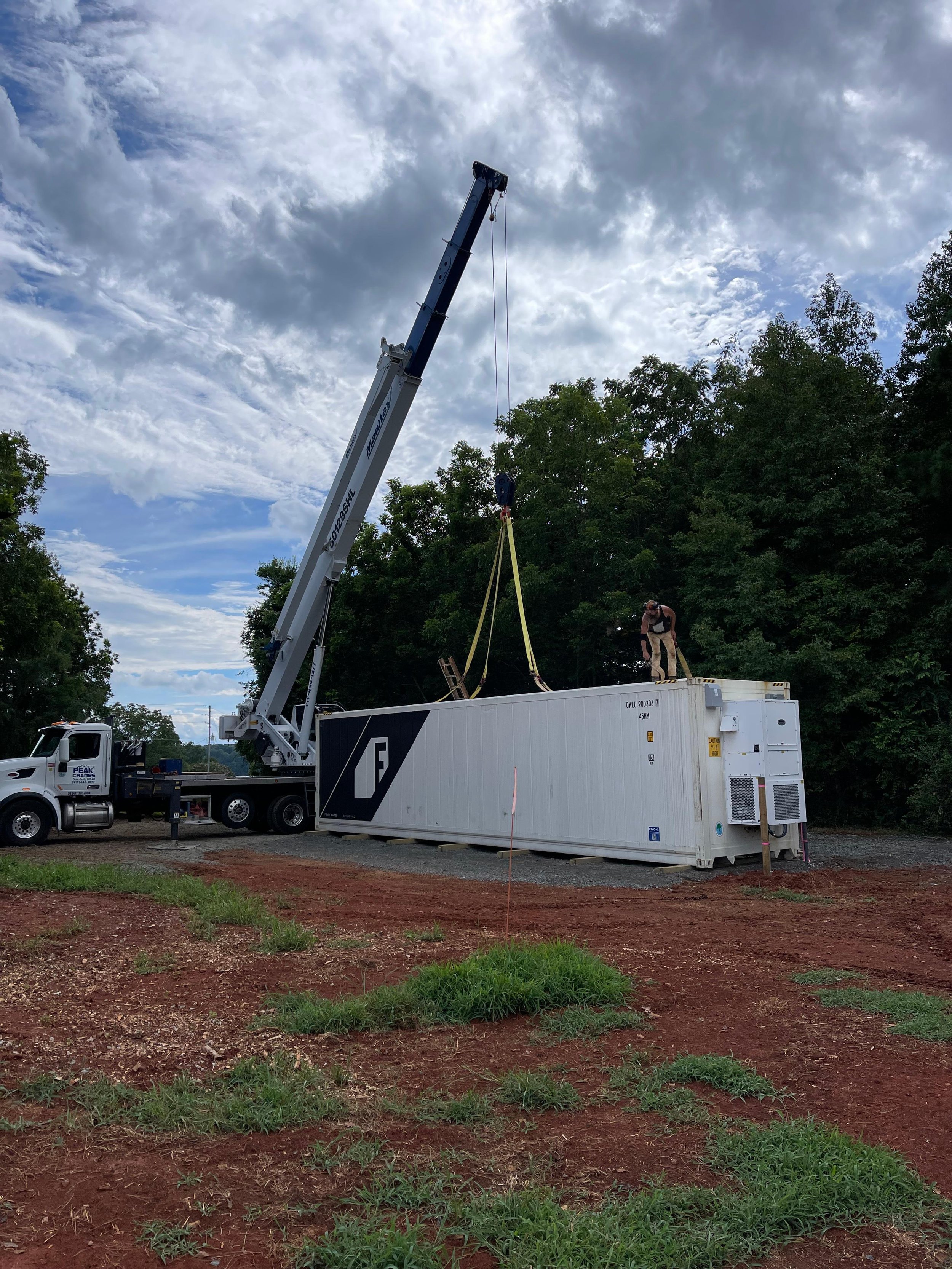The Impact of On-Site Hydroponic Farms at Food Banks
In the United States, millions of individuals and families face food insecurity, the state of having limited or uncertain access to adequate food. Food banks have long been the cornerstone of support for those in need, providing essential nourishment through donations and community programs. However, the challenge of ensuring a steady supply of fresh, nutritious produce remains a persistent issue.
Enter hydroponic farming, a revolutionary method of growing plants without soil using mineral nutrient solutions in an aqueous solvent. This technology offers a promising solution to the fresh produce problem food banks face. By integrating on-site hydroponic farms, food banks can enhance their ability to provide healthy, fresh vegetables year-round, regardless of external conditions.
Understanding Food Insecurity
Food insecurity is a pressing issue affecting millions of Americans. According to the United States Department of Agriculture, in 2020, approximately 13.8 million households were food insecure, translating to about 35 million people. The COVID-19 pandemic has exacerbated these numbers, with even more families turning to food banks for assistance.
Food insecurity is not just about the quantity of food available; it's also about the quality. Many food-insecure individuals rely on cheap, calorie-dense, and nutrient-poor foods, leading to a host of health problems such as obesity, diabetes, and heart disease. Fresh produce is vital for a balanced diet, yet it is often the hardest to come by for those relying on food banks.
Food banks play a crucial role in addressing hunger, but they face significant challenges. The most pressing of these is ensuring a consistent supply of fresh, nutritious food. Traditional methods of sourcing produce through donations or surplus often lead to inconsistent and insufficient supply. This is where hydroponic farming can make a significant difference.
What is Hydroponic Farming?
Hydroponic farming is a method of growing plants without soil. Instead, plants are grown in a nutrient-rich water solution. This method allows for precise control over the nutrients plants receive, often resulting in faster growth rates and higher yields compared to traditional soil-based agriculture.
There are several types of hydroponic systems, each with its unique mechanisms and benefits:
Nutrient Film Technique: This system involves a continuous flow of nutrient solution over the roots of the plants, which are supported by a grow tray. This method is efficient in water usage and ideal for leafy greens and herbs.
Deep Water Culture: Plants are suspended in a nutrient-rich solution with their roots submerged. This system is simple and effective, making it suitable for a variety of vegetables.
Aeroponics: In this system, plant roots are misted with a nutrient solution in a closed environment. This method is highly efficient in using water and nutrients and can lead to rapid plant growth.
Drip Systems: The nutrient solution is dripped onto the base of each plant at a slow rate. This method is versatile and can be used for a wide range of crops.
Hydroponic farming offers several advantages over traditional agriculture:
Water Efficiency: Hydroponic systems use up to 90% less water than traditional farming methods.
Space Efficiency: Hydroponic farms can be set up vertically, making them ideal for urban environments with limited space.
Year-Round Production: Controlled environments allow for year-round cultivation, independent of weather conditions.
No Soil-Related Issues: Eliminates problems related to soil quality, pests, and diseases.
Higher Yields: Plants often grow faster and produce more due to optimized nutrient delivery.
Benefits of On-Site Hydroponic Farms at Food Banks
Implementing on-site hydroponic farms at food banks can offer numerous benefits that extend beyond just providing fresh produce. Here are some key advantages:
Consistent and Reliable Supply of Fresh Produce
Hydroponic systems can produce a steady supply of vegetables throughout the year, ensuring that food banks have a constant source of fresh, nutritious produce.
This reliability can reduce the dependency on external donations and surplus food, providing greater food security for those in need.
Improved Nutritional Quality
Access to fresh vegetables can significantly improve the nutritional quality of the food distributed by food banks.
Fresh produce is rich in essential vitamins, minerals, and antioxidants that are crucial for maintaining good health, particularly for vulnerable populations.
Educational Opportunities
On-site hydroponic farms can serve as educational hubs, teaching community members about sustainable agriculture, nutrition, and the benefits of fresh produce.
Workshops and hands-on activities can engage volunteers and clients, fostering a sense of community and empowerment.
Environmental Benefits
Hydroponic farming is highly water-efficient, using significantly less water than traditional agriculture.
It eliminates the need for pesticides and herbicides, reducing the environmental impact and promoting safer food consumption.
Urban hydroponic farms can reduce the carbon footprint associated with transporting produce from rural areas to urban food banks.
Cost-Effectiveness
While the initial setup costs for hydroponic systems can be high, the long-term savings and benefits can outweigh these expenses.
Reduced reliance on external food donations and increased efficiency in food production can lead to cost savings for food banks over time.
Challenges and Solutions
While the benefits of on-site hydroponic farms at food banks are substantial, there are also challenges to consider. Here are some common obstacles and potential solutions:
Initial Setup Costs
Challenge: The initial investment for hydroponic systems can be high, including costs for equipment, infrastructure, and training.
Solution: Food banks can seek grants, donations, and partnerships with local businesses and agricultural organizations to fund the setup. Crowdfunding campaigns and community support can also be effective in raising the necessary funds.
Technical Knowledge and Maintenance
Challenge: Hydroponic systems require technical knowledge and regular maintenance to ensure optimal performance.
Solution: Providing training for staff and volunteers is essential. Partnering with local agricultural colleges or hydroponic experts can offer ongoing support and expertise. Additionally, many hydroponic systems come with user-friendly interfaces and support services to assist with maintenance.
Space Constraints
Challenge: Urban food banks may face limitations in available space for setting up hydroponic farms.
Solution: Vertical farming solutions can maximize space efficiency, allowing hydroponic systems to be installed in small or unconventional spaces. Rooftop farms and repurposed buildings can also be utilized.
Resistance to New Technology
Challenge: Introducing new technology can sometimes be met with resistance from staff, volunteers, or the community.
Solution: Education and demonstration of the benefits of hydroponic farming can help overcome resistance. Showcasing successful case studies and providing hands-on experiences can build support and enthusiasm for the initiative.
Future Outlook and Opportunities
The future of on-site hydroponic farms at food banks looks promising, with numerous opportunities for growth and integration. Here are some potential developments:
Scaling Up the Model
As the benefits of hydroponic farming become more widely recognized, the model could be scaled up to include more food banks across the country.
Collaboration between food banks, agricultural organizations, and government agencies can facilitate the expansion of hydroponic farming initiatives.
Integration with Other Community Services
On-site hydroponic farms can be integrated with other community services, such as nutrition education programs, cooking classes, and health clinics.
This holistic approach can address multiple aspects of food insecurity and promote overall community well-being.
Policy and Government Support
Advocacy for policy changes and government support can play a crucial role in promoting the adoption of hydroponic farming at food banks.
Funding programs, tax incentives, and regulatory support can encourage more food banks to implement hydroponic systems.
Vision for the Future
The ultimate vision is for food banks to become self-sustaining sources of fresh produce, reducing reliance on external donations and enhancing food security.
Embracing innovative solutions like hydroponic farming can transform food assistance programs, creating a more resilient and sustainable future for communities in need.
Conclusion
The integration of on-site hydroponic farms at food banks represents a significant step forward in addressing food insecurity and promoting sustainable agriculture. By harnessing the power of hydroponic technology, food banks can provide a consistent supply of fresh, nutritious produce, improve the health of their community, and engage the community in educational and environmental initiatives.
The success stories of food banks that have implemented hydroponic farms demonstrate the transformative potential of this approach. While challenges exist, they can be overcome through strategic planning, community support, and collaboration with experts and organizations.
As we look to the future, the expansion of hydroponic farming at food banks holds great promise for enhancing food security, promoting healthy eating, and creating a more sustainable and resilient food system. The time is ripe for food banks, donors, policymakers, and communities to embrace this innovative solution and work together toward a brighter future for all.










